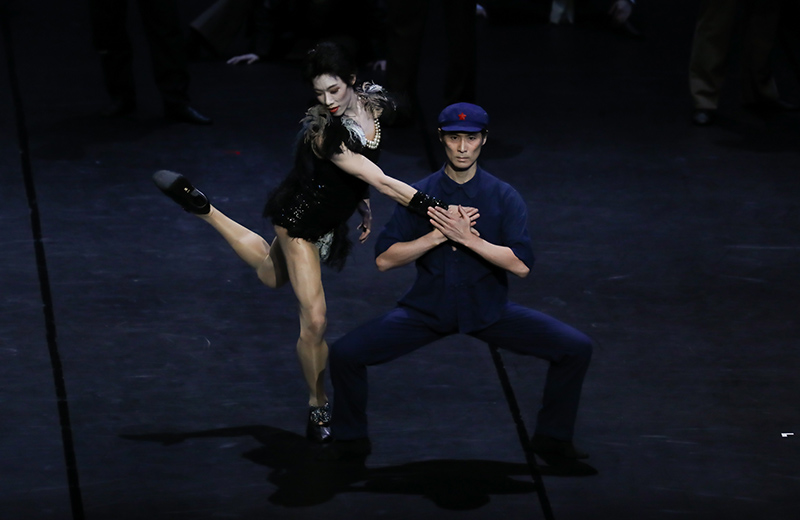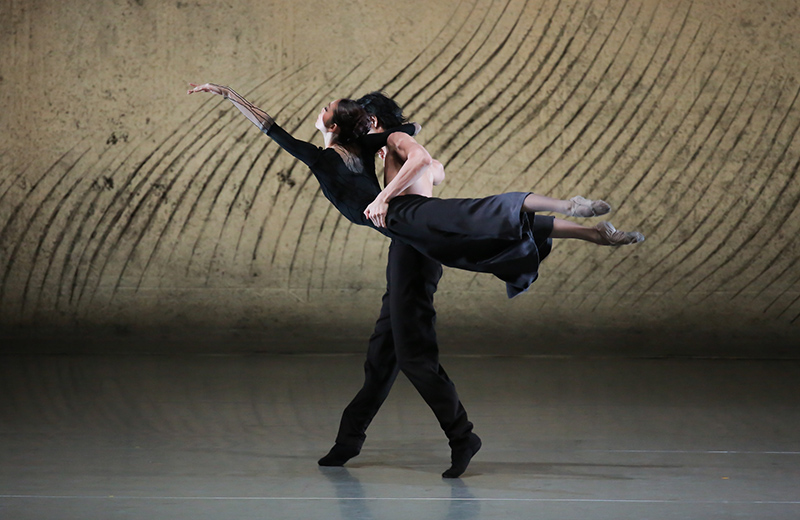KAGUYAHIME - Act 1
World Premiere
Direction and Choreography Jo Kanamori
Music Claude Debussy
Costume design Tamae Hirokawa (SOMA DESIGN)
Décor Masaki Kondo
Video Ryu Endo
Lighting design Masakazu Ito (RYU)
Assistant Director Sawako Iseki
Costume production Sonoko Takeda (Veronique)
Technical coordinator Masaya Natsume

"Kaguyahime" or "The Tale of Bamboo Cutter", the oldest Japanese surviving piece of literature, has long been an inspiration to many artists in various fields. Having studied many of their works, Jo Kanamori set to work on his own creation. "As I have heard some of the pieces of Claude Debussy's music, scenes of the ballet naturally came up to my mind" says Kanamori. Act I will depict the beginning of the story from the birth of Kaguyahime until her leaving home to enter the court life.

Photo: Kishin Shinoyama
Jo Kanamori
Le Mandarin merveilleux
Choreography Maurice Béjart
Music Béla Bartók
Costume design Anna De Giorgi (after the films of Fritz Lang)
Scenery Christian Frapin
Lighting Clément Cayrol

Inspired by films of German film director Fritz Lang, especially by "M", Maurice Béjart choreographed Le Mandarin Merveilleux to a pantomime ballet of Béla Bartók to portray the slum-inspired universe of the Middle Europe. The ballet gets to the core of eros and folie in the prevailing sexual ambiguity in the underworld, between the two world wars. It was world premiered by the Béjart Ballet Lausanne in 1992, and was premiered by The Tokyo Ballet in 2004.

Photo: Yoshihiro Kawaguchi
Maurice Béjart
(1927-2007)
Dream Time
Choreography Jirí Kylián
Music Toru Takemitsu
Décor and costumes John F. MacFarlane
Lighting Concept Jirí Kylián
Lighting-realisation Joop Caboort (1983)
Technical coordination / Lighting redesigned by Kees Tjebbes

Dream Time was premiered by the Nederlands Dans Theater in 1982, and by The Tokyo Ballet in 2000. Jirí Kylián commissioned Toru Takemitsu whom he had long admired, to compose a piece of music for his ballet. In 1982, they met for the first time on a remote island north of Australia where they shared a profound experience at a large Aboriginal gathering. The mutual experience became the foundation for Dream Time. Five performers seamlessly dance and communicate across all barriers to the majestic score of Takemitsu to create a universe of flowing elegance.

Photo: Anton Corbijn
Jirí Kylián